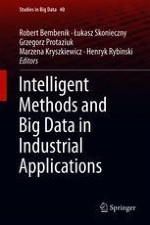2019 | OriginalPaper | Chapter
Multimodal Learning Determines Rules of Disease Development in Longitudinal Course with Parkinson’s Patients
Authors : Andrzej W. Przybyszewski, Stanislaw Szlufik, Piotr Habela, Dariusz M. Koziorowski
Published in: Intelligent Methods and Big Data in Industrial Applications
Publisher: Springer International Publishing
Activate our intelligent search to find suitable subject content or patents.
Select sections of text to find matching patents with Artificial Intelligence. powered by
Select sections of text to find additional relevant content using AI-assisted search. powered by
